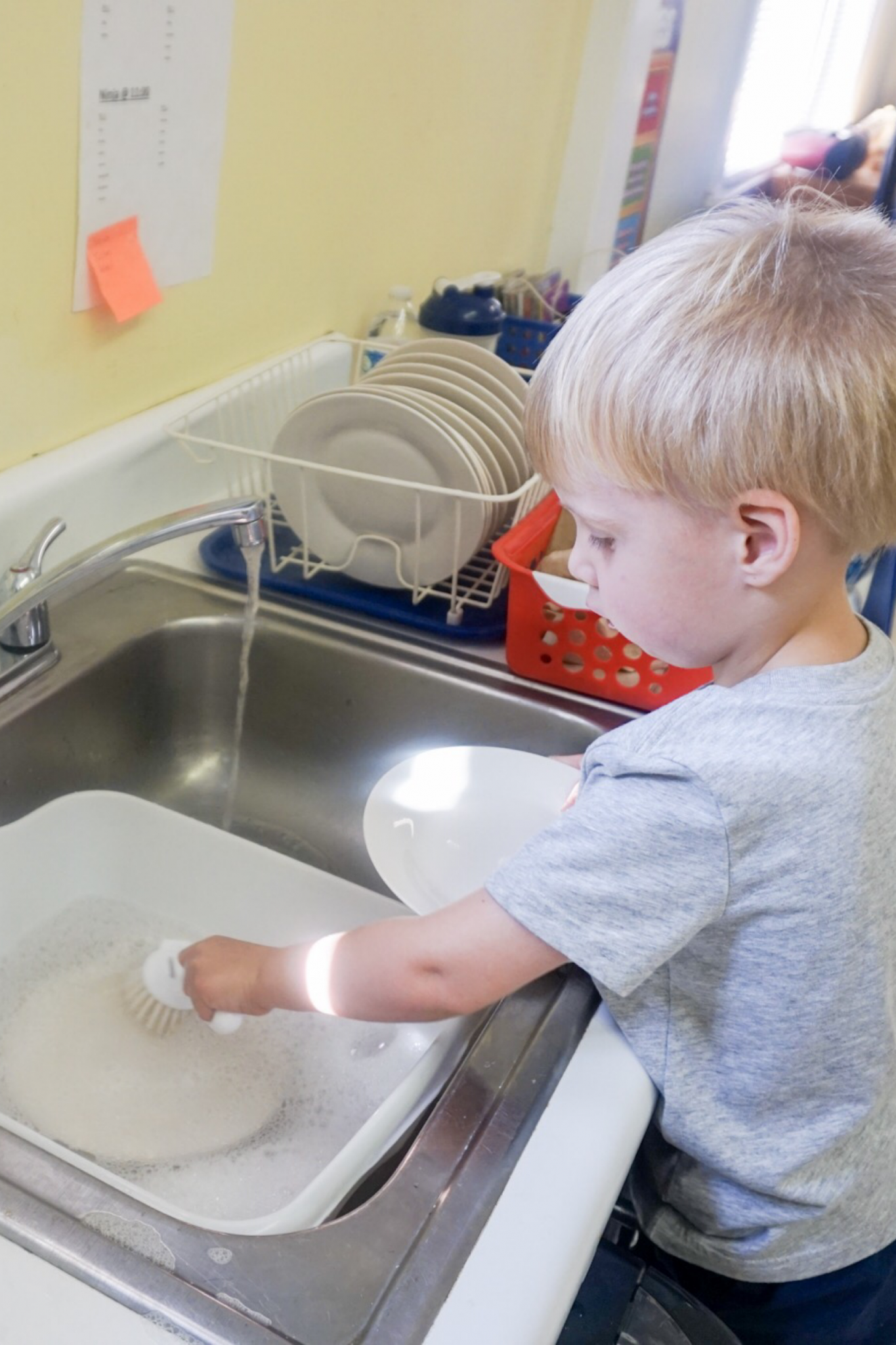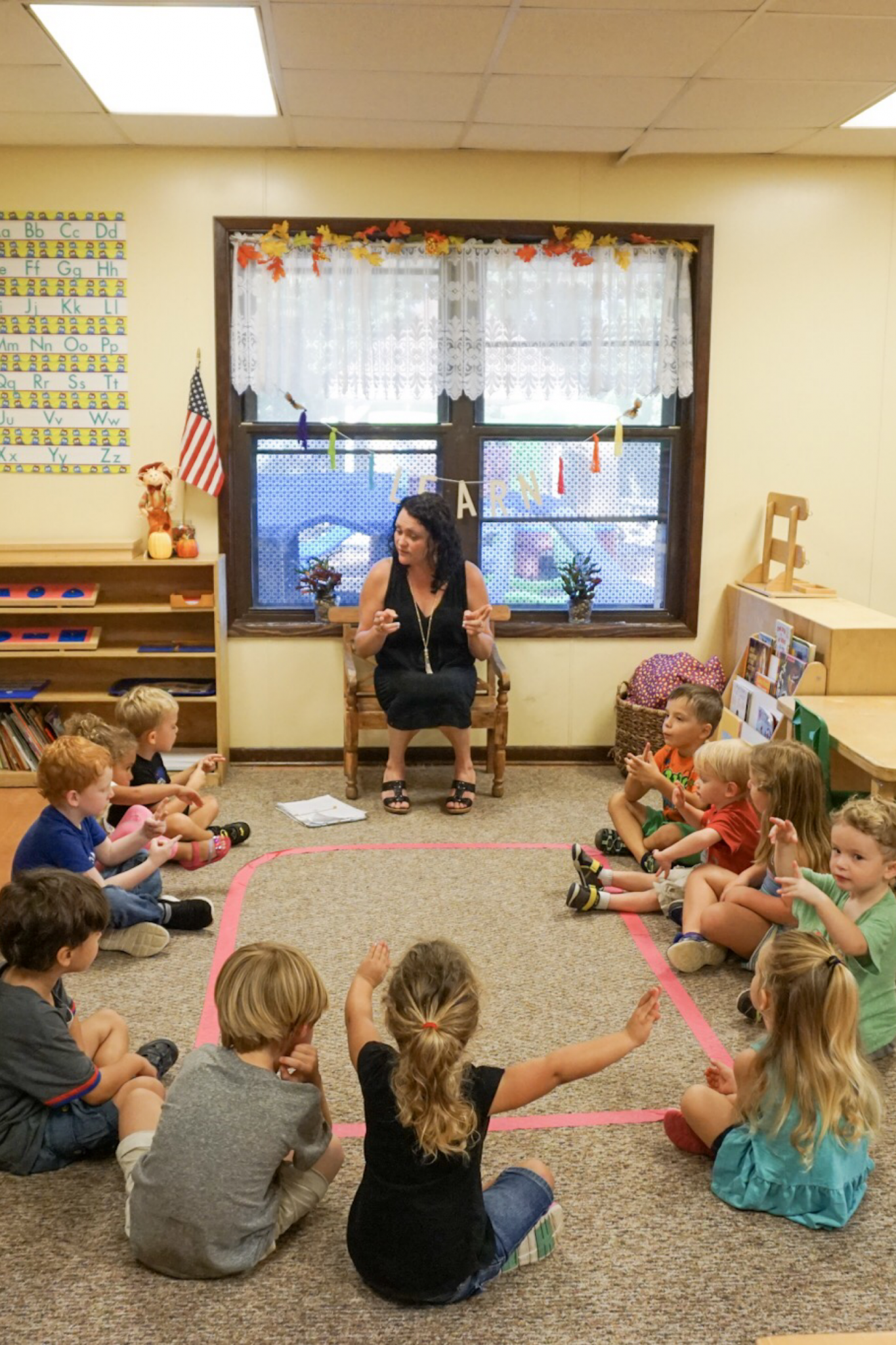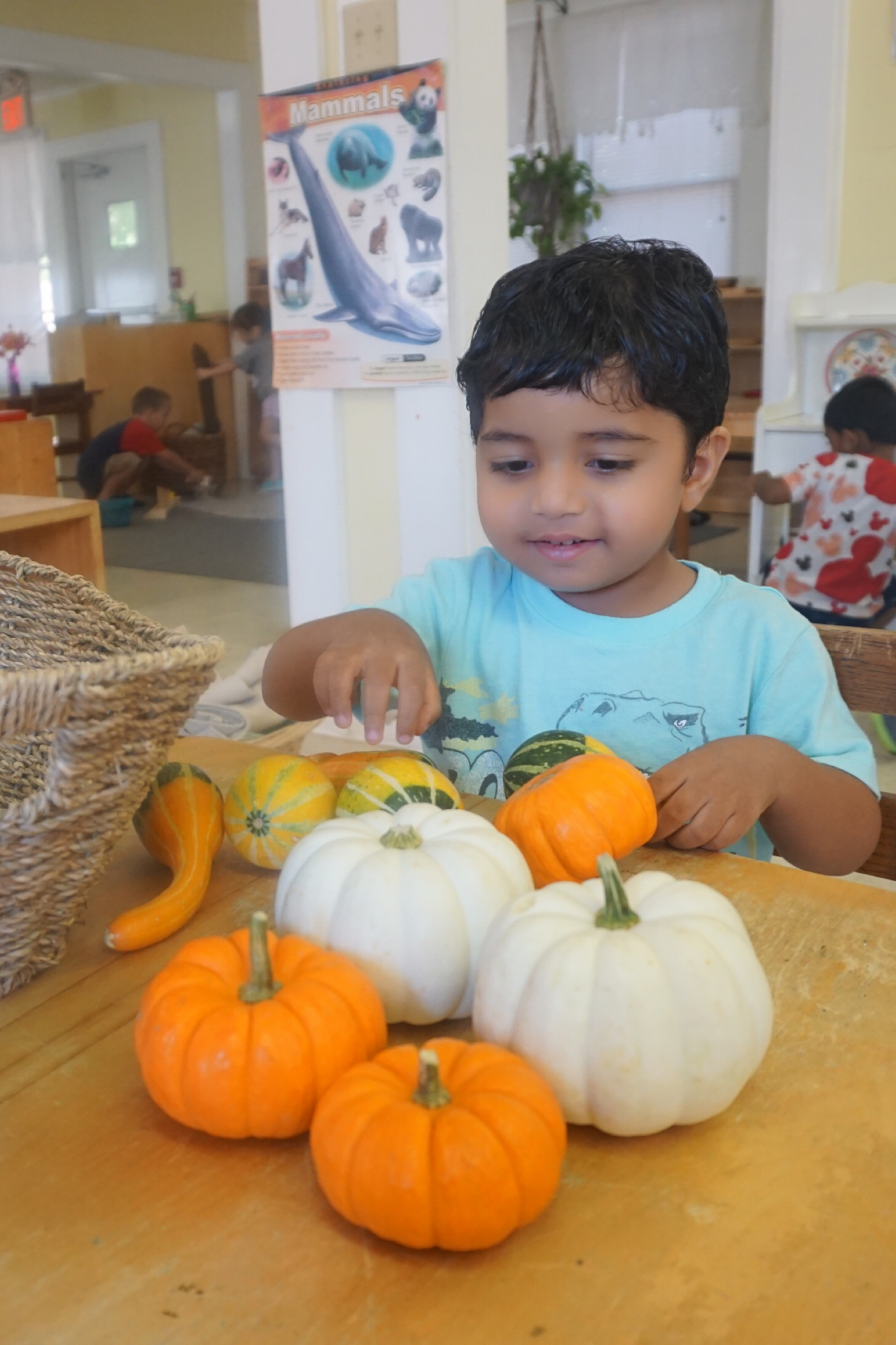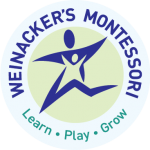The Montessori classroom contains a variety of materials that facilitate the learning of developmentally appropriate skills and concepts. These materials are designed to engage the child on many levels, to encourage the use of the child’s senses, to teach the concept of sequence and order, and to be self-correcting. The child is part of a multi-age grouping that encourages a family-like atmosphere so that learning takes place naturally and spontaneously as the child works at his own pace with the materials selected from the environment.



The learning environment is divided into four primary areas.
Practical Life Area
The Practical Life area allows the child to participate in “real life” activities, which aid the child in the development of coordination, organizational skills, concentration, and independence. Activities include pouring, spooning, sweeping, mopping, polishing, a variety of cleaning activities, dressing frames, folding, sorting and many fine and gross motor activities with a variety of everyday objects.
Sensorial Area
The Sensorial area provides activities with an array of materials designed to refine the child’s senses, and that help in the understanding of more complex concepts. Activities found in this area include color tablets, sound cylinders, and smelling bottles for matching; cylinders, prisms, and cubes for arranging according to size and shape; and a variety of material to demonstrate texture, weight, temperature, and their similarities and differences.
Language Arts Area
The Language Arts area provides materials that aid in language development. The child learns to spell, read, and write initially by using a phonetic approach based on sensorial materials. Activities involve the use of sandpaper letters to teach sounds and letters, the moveable alphabet to create words, the use of small phonetic objects or pictures to compare words, and learning to read by pronouncing the sounds of words.
Mathematics Program
The Mathematics program begins with sensorial activities that enable the child to distinguish shapes and sizes. Once this base is in place, the child moves ahead to the concepts of units, measurement, and written number recognition by working with the number rods, spindle boxes, sandpaper numerals, and cards and counters. After mastery of these concepts has been demonstrated, the child will work with golden beads and other materials to learn the concepts of addition, multiplication, subtraction, and division.
Geography, Spanish, Art, and Music
Geography, Spanish, Art, and Music materials are also sequenced into each area of the classroom environment. Botany and Zoology are also considered vital parts of the curriculum. Also integrated throughout are the concepts of grace and courtesy, care for one another, and care for the environment. As in all areas of the classroom, the child begins with the simplest and progresses through increasingly more complex activities.

